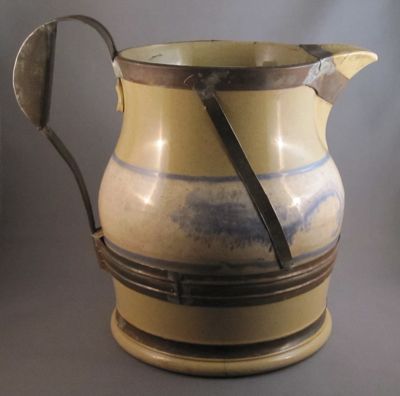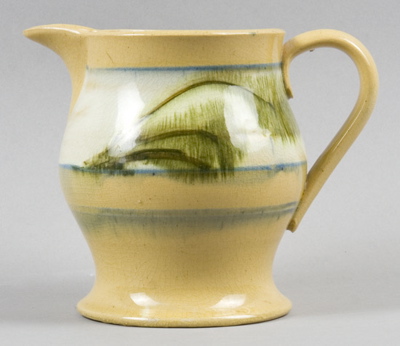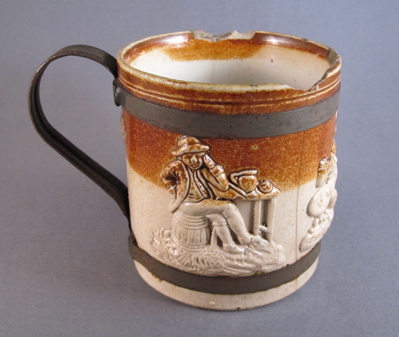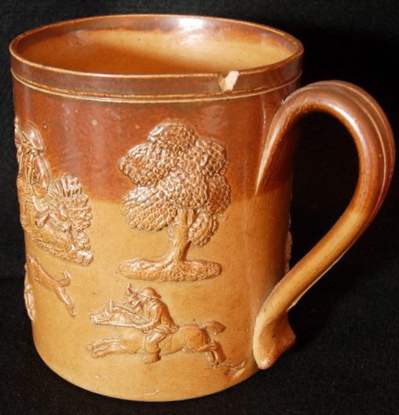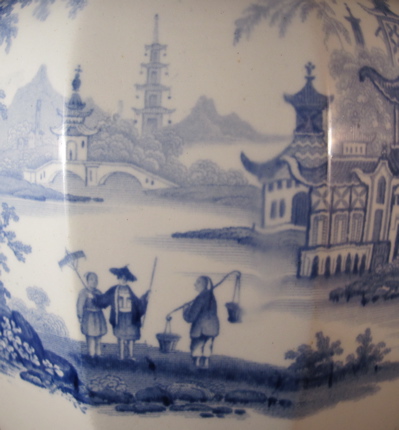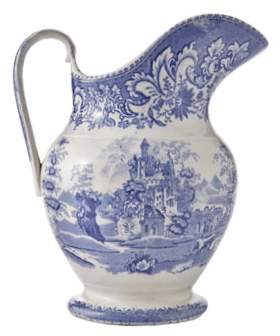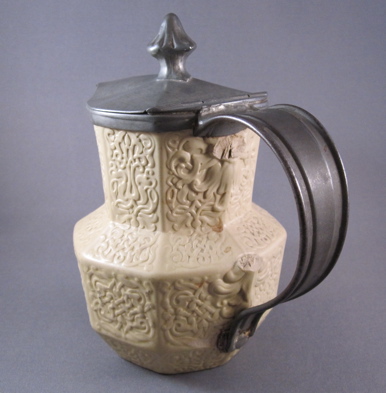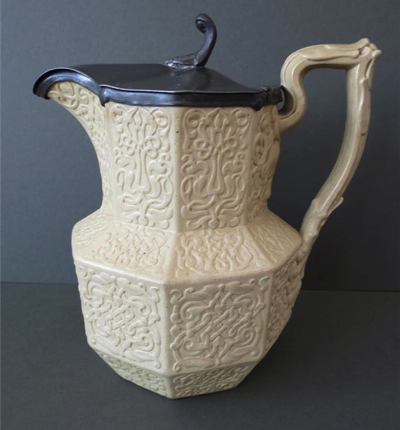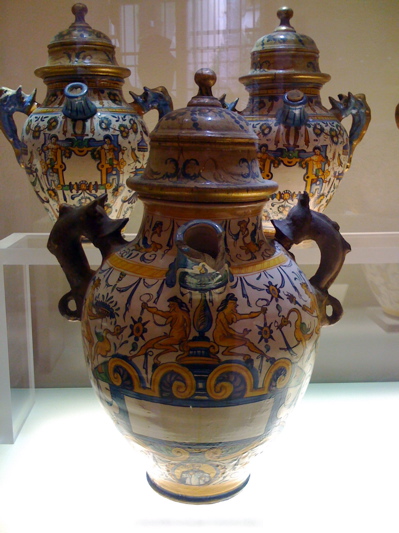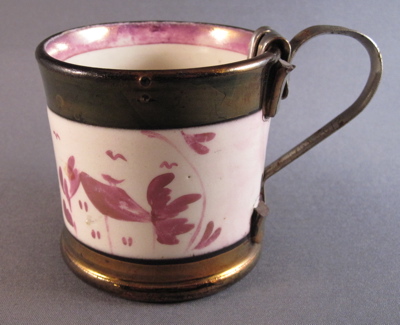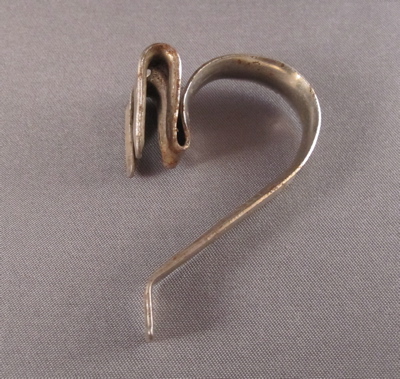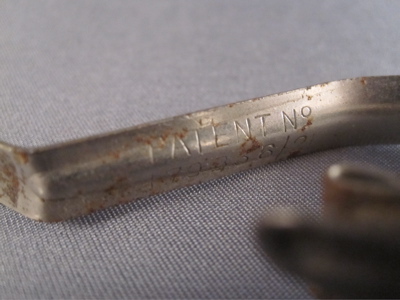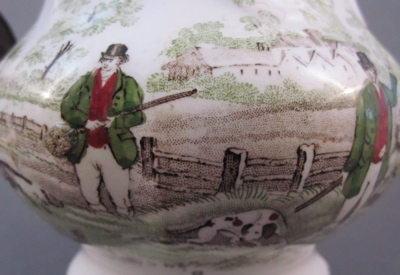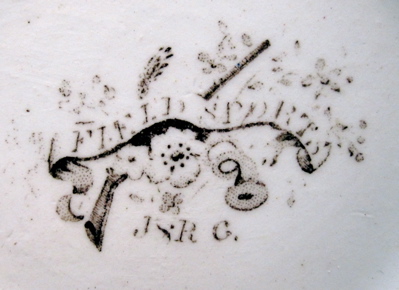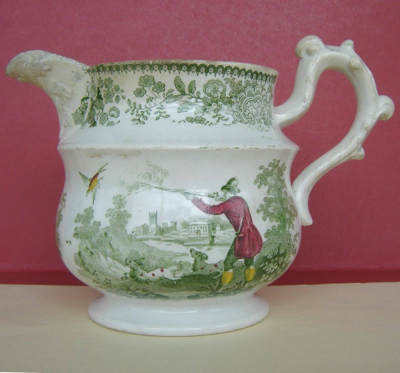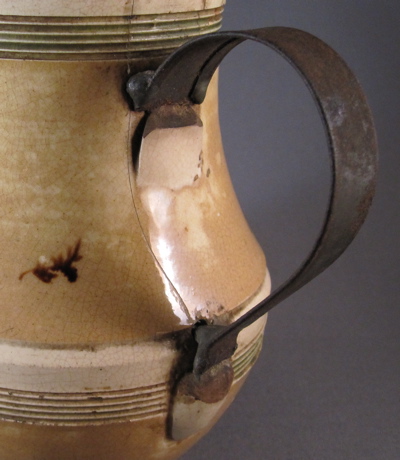It is unusual to see a large and stout jug of this type, so you can imagine how thrilled I was to find one with such an impressive inventive repair. This American yellow ware mocha jug is decorated with a washed out blue slip seaweed pattern on a wide white band along side two narrow blue bands
I found this wonderful addition to my collection in Maine this summer, but the dealer I purchased it from originally found it in Pennsylvania
Jug measures 9-1/4″ high
Due to the sheer weight of this piece, a replaced tin handle was firmly attached to the body by means of an elaborate metal truss, encompassing the rim, spout and base
Another jug with similar form and decoration has its original applied handle and looks quite different without the metal armor of my jug
Photo courtesy of Antique Associates at West Townsend


